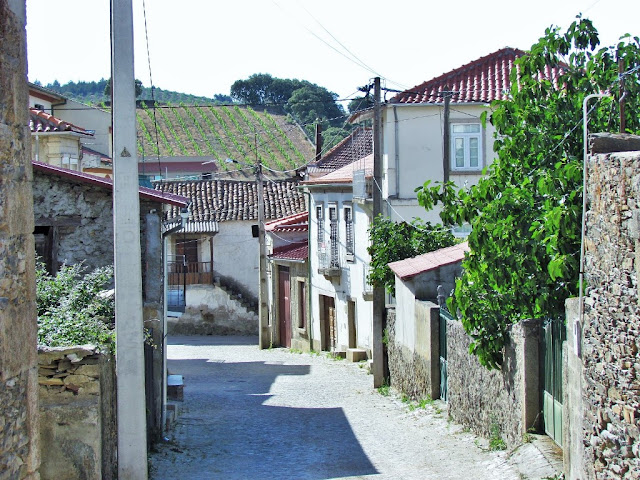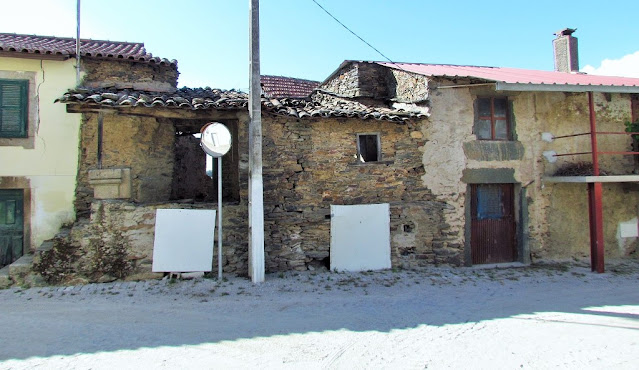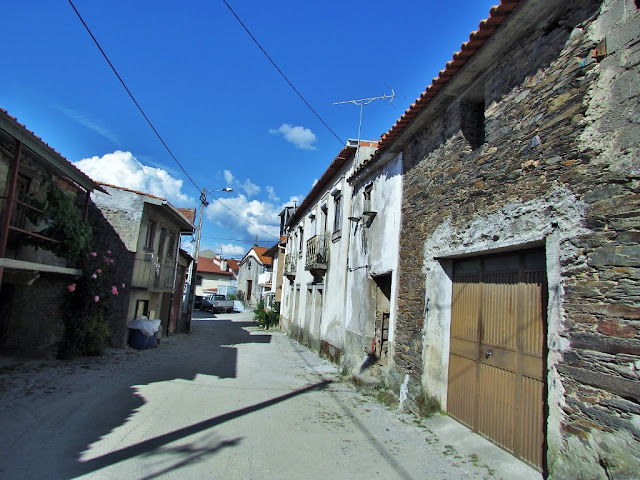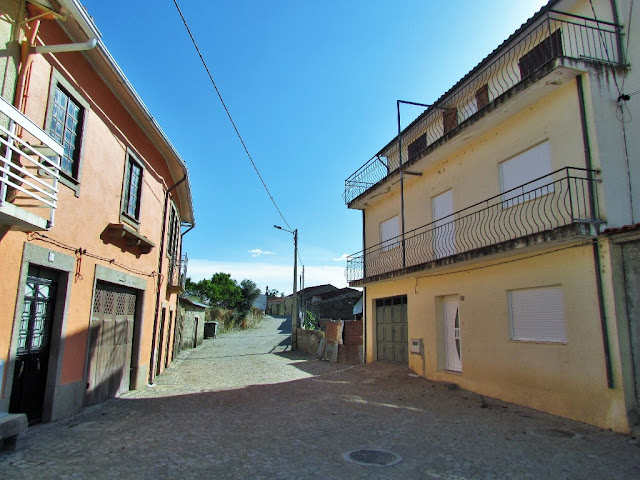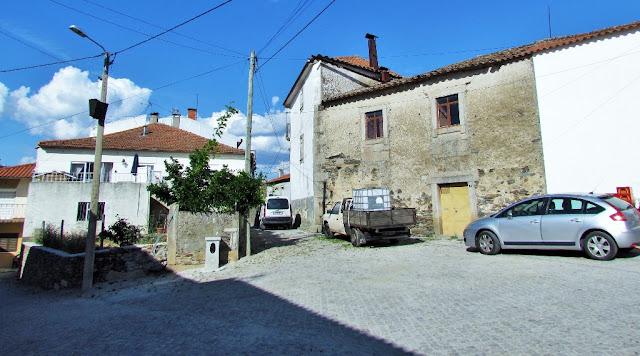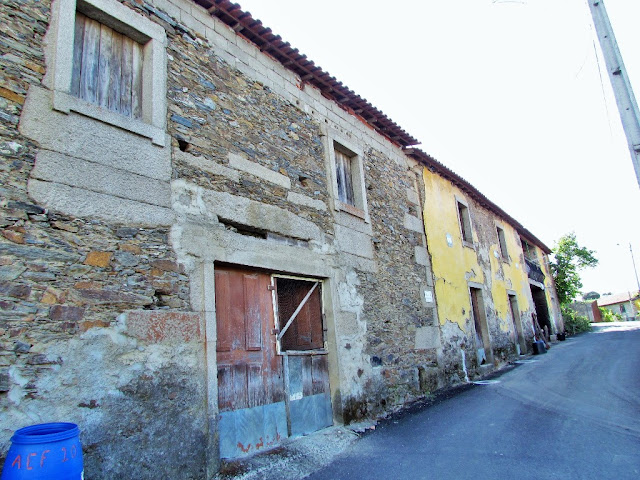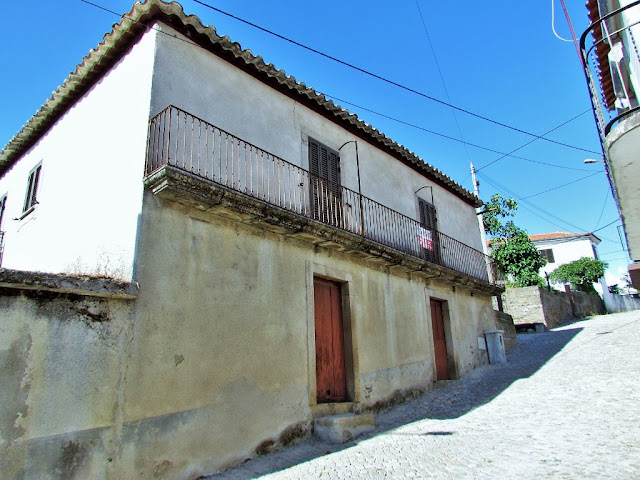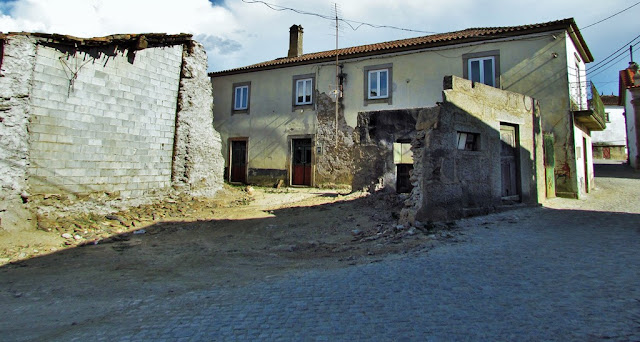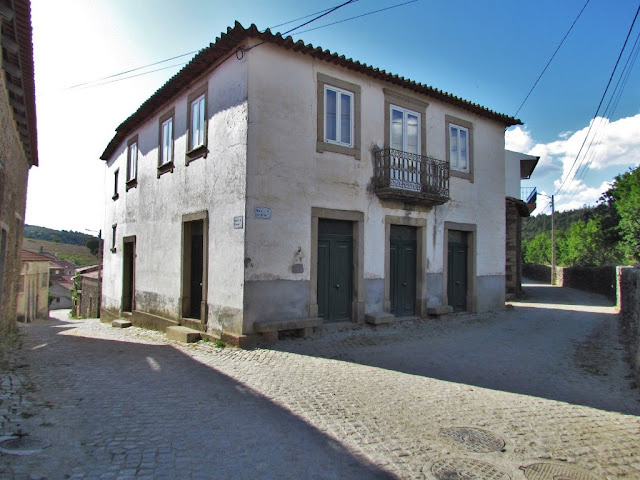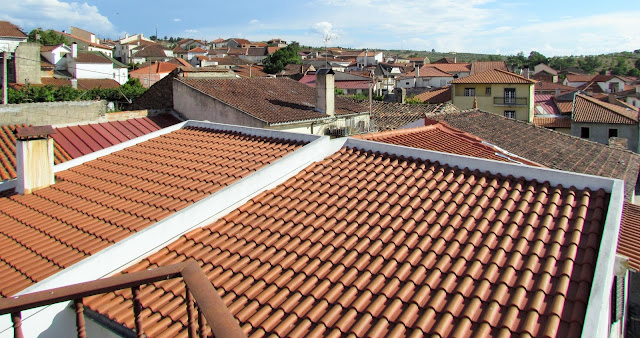CASTELO BRANCO (MOGADOURO)
41.27647º N; 6.75503º W
Castelo Branco is a Portuguese parish in the municipality of Mogadouro, with an area of 54.57 km² and 330 inhabitants (2021). Its population density is 6 inhabitants/km².
Castelo Branco is located 12 km southwest of the county seat, with access via the EN 221. It is located north of the Serra de Lagoaça and close to the right bank of the Douro river.
History
Castelo Branco de Mogadouro is a land of ancient and noble traditions, with a very important historical and social past, especially in the Middle Ages and after the intervention of King D. Dinis in 1319. Its origins are distant in time. According to historians, and everyone agrees on this point, Castelo Branco was not born there, but next to the chapel of Nossa Senhora da Vila Velha, which is located 1.5 km northwest of the village in "Cabeço dos Mouros" or "Preijal". as the ancients call it. We have present and visible until our days, traces of a castro with signs of being Romanized judging by the assets found, coins and various antiquities. Popular stories have passionately and affectionately associated this place with various legends of "enchanted moors".
It was Commandery of the Templars, passing in 1311, the Commandery of the Order of Christ. The church that visitors saw is now far from the village, on a hill called "Vila Velha". It retains the three very simple Manueline portals and an inscription evocative of a renovation in 1501. Castelo Branco was born there. Next to the chapel there are still remains of the former dwelling of the former commanders. The pilgrimages made to hear mass in this chapel gave rise to the village of Castelo Branco. The chapel is what remains of the somewhat renowned sanctuary that was possibly responsible for the Christianization of the village of mines in the Luso-Roman castro existing in the region. It belonged to the term of Santa Maria de Castelo Branco, then a notable and developed hospital commendation. It was mentioned in a charter letter granted by King D. Manuel I of Portugal to Bemposta in 1512.
The legend, as happens in all the ruins of extinct civilizations, has poetized them. Thus, according to her, the people of Alfândega da Fé, located 25 km away, came to hear mass at the chapel of Nossa Senhora da Vila Velha and, as the journey was long, they rested and ate their snacks in a pleasant valley where later some devotees established residence. , thus giving rise to the current town of Valverde.
Time has erased the narrative and the reason that made the village move to its current location.
Although Mogadouro is the Mushroom Capital, the fact is that it is in Castelo Branco where they grow in greater numbers and of the finest quality. Rocos or roculos (Macrolepiota procera), sanchas (lactarius deliciosus), mites (Boletus edulis) are easily found and in large quantities at the right times.
villages
The parish is made up of three villages:
Castelo Branco - 297 inhabitants in 2011
Estevais - 97 inhabitants in 2011
Quintas das Quebradas - 55 inhabitants in 2011
Patrimony
Palácio dos Pimentéis or Solar dos Pimentéis – rectangular in plan – was certainly built in the second half of the 18th century, as certain decorative elements seem to indicate, particularly the window frames, which bear parapets with earrings and the wavy finish, characteristically baroque, printing movement to the composition. The pinnacles that crown the corners indicate a very advanced period for the construction of the house. This boasts an imposing façade, articulated with wide pilasters, with heavy and very protruding bases, in a type that was very common in the North at that time" … "The central mansard – another sign of the relatively advanced period – preserves, between the two windows, the large coat of arms, magnificent piece of heraldry."one of the most elegant buildings in the District of Bragança, this manor house with a classic granite coat of arms acquired in 1795 dates from the mid-18th century.
Roman Bridge - Castelo Branco Mogadouro old bridge - The bridge can be accessed via the EN 221 road (Mogadouro - Freixo Espada-à-Cinta), on the old road at the entrance to the village on the side. It is next to the chapel of São João, with some houses nearby. Upstream there is a pier where the EN 221 passes. Construction Period: Middle Ages/Modern Age. Horizontal deck bridge over two equal round arches. Construction of granite ashlars on the left side and shale masonry on the right side. The voussoirs of the arches are made of granite and are wide and short with an irregular extrados. It has a buttress on the handle with a triangular cut without a cut. It does not keep guards. The pavement is made of granite slabs, in the central section, and cobblestone pavement at the entrances. It shows in the arches the holes of the needles. Typology: Public civil architecture, medieval and modern. Reconstructed medieval bridge, with a horizontal deck over two equal round arches. It seems to follow the same model as the neighboring bridge of Vilarinho dos Galegos.
Particular Characteristics: It seems to have undergone many reconstruction works, evident in the different types of construction apparatus and floor covering. Technical Data: Mixed structure. Materials: Granite, staves and ashlars; shale, masonry.
Igreja Matriz de Castelo Branco / Igreja de Nossa Senhora da Assunção – The current church replaced another, very old one that probably dates back to the 12th century. One of the first information we have about it dates from the beginning of the 16th century. Inside the Church, almost everything remains the same as the renovation carried out in 1793. It has a single nave, rectangular and divided into three sections by two diaphragm arches. The triumphal arch divides the nave from the characteristic chancel, which was common especially in the richest churches of the diocese. Outside, it still preserves a cross of sections that is probably from the 16th century.
Chapel of Nossa Sr.ª da Vila Velha – Sanctuary of a very old cult that, judging by the assets found there, christianizes the ruins of a Castro Luso – Roman existing there.
Roman Fountains and Roman Bridges in the parish and neighboring villages.
Bridge of Quinta das Quebradas
Church of Estevais
Chapel of Nossa Senhora das Graças
Fountains in Castelo Branco
Atalaia do Pendão
Village of Casas de Baixo / Village of Estevais
festivities
Our Lady of Fatima (May 13)
Saint Bernardino of Siena (May 20)
São Lourenço (August 10)
Our Lady of Vila Velha (September 12)
Saint Michael the Archangel (September 29)














